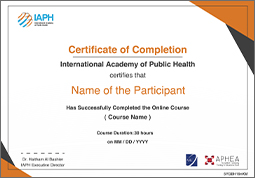Environmental Risk Assessment
Description
This course develops the qualitative and quantitative skills necessary to evaluate the probability of health effects from exposure to environmental contaminants. Basic concepts of qualitative and quantitative risk assessment are demonstrated with practical case studies. Emphasis is on hazard identification, dose-response evaluation, exposure assessment, and risk characterization. Integration of risk assessment with risk management and communicating risks to the public are discussed. Regulatory aspects of risk assessment in the promulgation of environmental standards are presented.
Learning Outcomes
- Define and discuss basic risk assessment concepts and their basis in human health toxicology
- Identify and explain the four steps in qualitative and quantitative risk assessment: hazard identification, dose-response evaluation, exposure assessment, and risk characterization
- Use quantitative risk assessment methods and mathematical models for high-to-low dose extrapolation in non-cancer health outcomes
- Use quantitative risk assessment methods and non-threshold mathematical models for cancer risk assessment
- Discuss the derivation, uses, limitations, and applications of uncertainty analysis and probabilistic risk assessments
- Perform exposure assessments based on data from case studies
- Evaluate the use of risk assessments within risk management and risk reduction decision making
- Obtain and use published risk assessment guidelines and information resources for databases supporting the public health professional involved in risk assessment.
- Introduction to Risk Assessment.
- Environmental Risk Assessment.
- Health Assessment and Surveillance.
- Uncertainties in Risk Assessments.
Course Features
Note: The course completion period is 6 months from the date of purchase. Enjoy learning!
Certificate

The participant will be awarded a certificate of successful completion upon completing the course.


